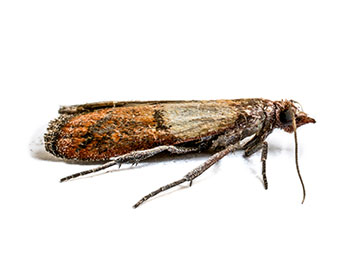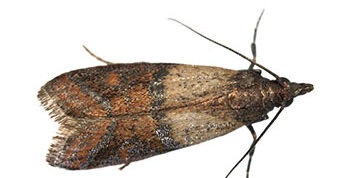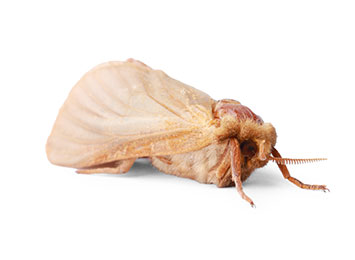Reproduction and Life Cycle
Moths reproduce sexually and can lay hundreds of eggs in their lifetimes. Rate of moth development depends on temperature and food availability in the environment where the moths live. In warm climates, moth eggs hatch in four to ten days. In colder temperatures, they can take up to three weeks.
After hatching, larvae feed continuously, growing enough to shed their skin several times. After consuming enough food, larvae pupate in cocoons near their food sources. Pupation time varies from eight days to several weeks. Moths emerge from pupation fully-grown and ready to reproduce.
Female adult fabric moths lay an average of 40 to 50 eggs on promising food sources and die shortly thereafter. The time it takes to hatch is based on the temperature of their environment. In warm environments, the eggs could hatch 4 to 10 days.
After hatching, larvae begin feeding and growing immediately. As larvae grow, they will molt continuously up to 45 times. Depending on temperature and food availability, moths could remain larvae for only 35 days or up to 2 and a half years. After they’ve finally eaten and grown enough, larvae pupate inside silk cocoons. Pupation takes between 1 and 4 weeks newly emerged adult moths are ready to mate immediately.
Scientific Information
Scientific Order: Lepidoptera
Common species:
Pantry moths, including the Indian Meal Moth (Plodia interpunctella)
Fabric pests, including the Webbing Clothes Moth (Tineola bisselliella) and the Casemaking Clothes Moth (Tinea pellionella)




